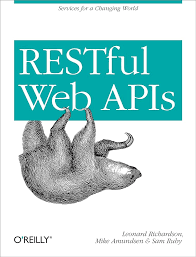Expanding the White Paper: A Comprehensive Guide to RESTful Web APIs and Testing Tools
Introduction
RESTful web APIs have become an integral part of modern software development, enabling seamless communication between different systems and applications. This white paper will provide a comprehensive overview of RESTful web APIs, including their key principles, design considerations, and testing strategies. We will also explore popular testing tools that can be used to ensure the quality and reliability of RESTful APIs.
Understanding RESTful Web APIs
- Representational State Transfer (REST): A set of architectural constraints for designing networked applications that emphasize scalability, performance, and simplicity.
- Key Principles of REST: Statelessness, cacheability, layered system, client-server architecture, self-descriptive messages, and uniform interface.
- HTTP Methods: Common HTTP methods used in RESTful APIs, including GET, POST, PUT, PATCH, DELETE, and OPTIONS.
- Resource-Oriented Architecture: Organizing APIs around resources, which represent entities in the application domain.
- JSON and XML: Commonly used data formats for representing API responses.
Designing Effective RESTful APIs
- Versioning: Managing changes to APIs over time to avoid breaking existing clients.
- Error Handling: Providing informative error messages and status codes.
- Security: Implementing authentication, authorization, and data encryption to protect APIs.
- Documentation: Creating clear and concise documentation to help developers understand and use the API.
Testing RESTful APIs
- Importance of Testing: Ensuring the correctness, reliability, and performance of APIs.
- Manual Testing: Manually testing APIs using tools like Postman or curl.
- Automated Testing: Using testing frameworks like JUnit, TestNG, or pytest to automate API tests.
- Unit Testing: Testing individual components of the API in isolation.
- Integration Testing: Testing the interaction between different components of the API.
- End-to-End Testing: Testing the entire API workflow from start to finish.
- Performance Testing: Evaluating the API's performance under load.
- Security Testing: Identifying and addressing security vulnerabilities in the API.
Popular Testing Tools
- Postman: A popular GUI tool for testing APIs, with features like request building, collections, and environments.
- JMeter: An open-source performance testing tool that can be used to simulate load and measure response times.
- SoapUI: A functional testing tool that supports REST and SOAP APIs.
- RestAssured: A Java library for testing RESTful APIs, providing a fluent API and built-in assertions.
- HTTPie: A command-line HTTP client that is easy to use and provides a clean syntax.
Conclusion
RESTful web APIs have become an essential component of modern software development. By understanding the key principles, design considerations, and testing strategies, developers can create robust, scalable, and reliable APIs. The testing tools discussed in this white paper can help ensure the quality and performance of RESTful APIs.
References
- RESTful Web Services by Leonard Richardson and Sam Ruby
- Designing Evolvable Web APIs by Fielding, Roy Thomas
- Postman Documentation: https://learning.postman.com/docs/introduction/overview/
- JMeter Documentation: https://jmeter.apache.org/
- SoapUI Documentation: https://smartbear.com/product/free/?lang=de
- RestAssured Documentation: https://rest-assured.io/
- HTTPie Documentation: https://httpie.io/cli
- API Testing: A Practical Guide by Mark Winteringham
- REST API Design: The Ultimate Guide by Kin Lane
- Building Microservices: Designing Fine-Grained Systems by Sam Newman
Additional Topics to Consider:
- API Gateway: A component that acts as a single entry point for all API requests.
- API Versioning Strategies: Different approaches to managing API changes over time.
- API Security Best Practices: Tips for protecting APIs from security threats.
- API Documentation Tools: Tools for generating and publishing API documentation.
- API Monitoring and Analytics: Tools for tracking API usage and performance.



